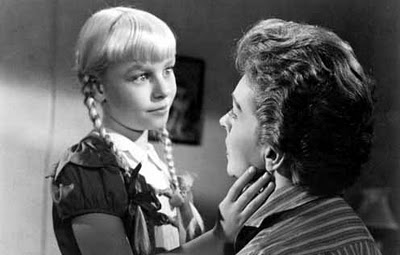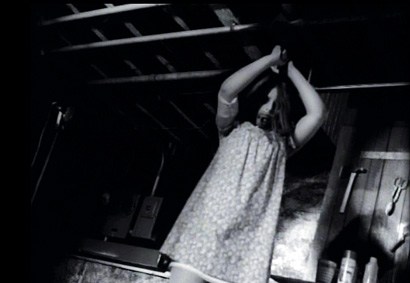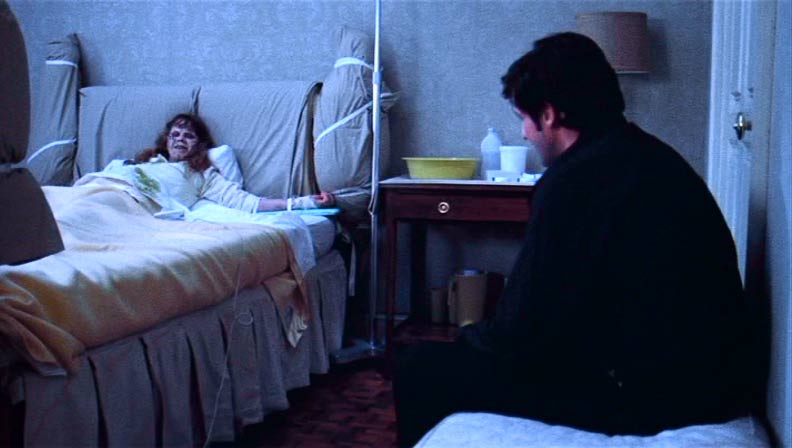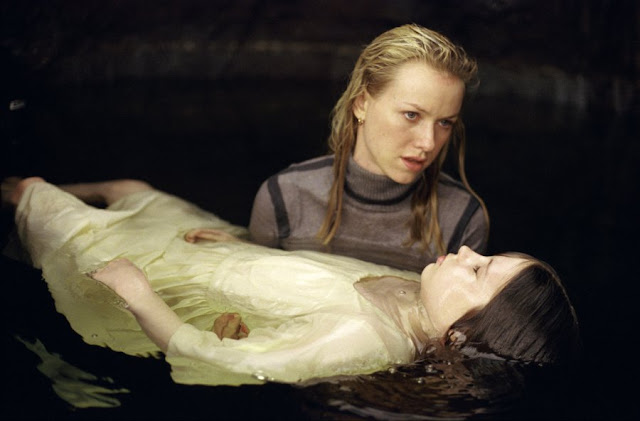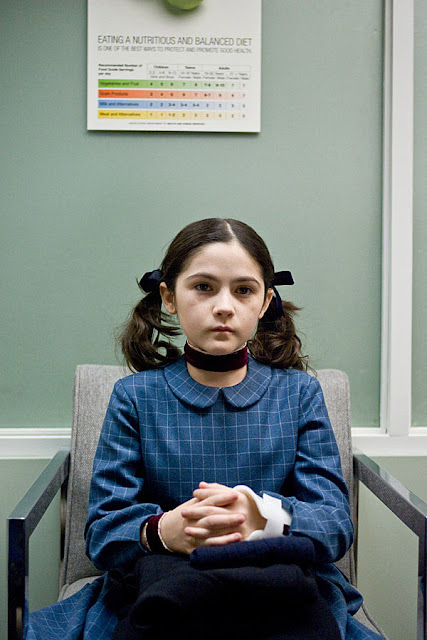This is a guest post by Brigit McCone.
Heathcliff is not white. Though his exact race is never defined, racial stigma is used to mark him as a threatening, “dark-skinned” outsider throughout Wuthering Heights. It is significant that this interracial aspect of the novel’s passionate romance wasn’t addressed on screen until Andrea Arnold’s 2011 adaptation, over 160 years after the book’s publication. Arnold foregrounds the issue of Heathcliff’s race by casting Black actors in the role, rather than the conventional “white-Anglo-Saxon-gypsy” dodge. The swearing, which was considered shocking by Brontë’s contemporaries, has been updated by Arnold to retain its impact for modern audiences, as has the racist language. Essentially, her film is a partial retelling of the novel, exclusively from Heathcliff’s perspective. Where Catherine makes a stray remark in the book about Heathcliff’s dull silence compared to Linton, Arnold’s film embodies that silence in wordless scenes on the Yorkshire moors. When Heathcliff is cast out of doors, Arnold’s camera forces us to share his exile and peer through windows at events within. When Heathcliff is beaten, we experience his pain in flinching close-up. When Heathcliff leaves in the middle of a dramatic speech, we are likewise denied its conclusion.
The result is fragmentary and sometimes frustrating, perhaps not satisfying as a standalone film. But it achieves what no previous adaptation has: to be a real enhancement to the book, rather than a pale reflection of it. Where Brontë’s novel filters our impression of Heathcliff through the narration of Lockwood’s smug, educated gentleman and Nelly’s commonsensical servant, each sometimes presenting him as incomprehensible, barbarous or threatening, Arnold flips this narrative to show us the incomprehensible barbarity and threatening cruelty of the dominant society itself, as seen through the outsider’s eyes. From this alienated perspective, Heathcliff’s descent into cruelty appears an inevitable and almost overdue reaction to the constant, painful brutality he suffers. Arnold’s interpretation might be compared to Steve McQueen’s approach to 12 Years A Slave, stripping away the rationalizing aimed at 19th century readers, to lay bare oppression in the most raw and physical way possible. In a world where an unarmed Black youth can be interpreted as more threatening than an armed representative of “mainstream” society, film’s potential to challenge our identification and flip our perspective is as timely as it is rarely used. By the time Mumford & Sons’ “The Enemy” plays over the film’s final moments, the song’s sentimental regret feels earned.
I Am Not the Enemy; It Isn’t Me, the Enemy
The question is, does Arnold’s sympathetic portrait of Heathcliff reflect Brontë’s own view of the character, or does it re-imagine the original author’s racist view, as reflected in Wuthering Heights’ narration? Firstly, it must be said that the story Arnold unearths is taken straight from the original book, although there it is diluted by the perspectives and interpretations of others. Perhaps the book’s most crucial speech is Catherine Earnshaw’s “whatever our souls are made of, his and mine are the same… Nelly, I am Heathcliff,” placing Brontë’s white heroine in absolute solidarity with the non-white hero, which Arnold highlights by letting Cathy’s “I am Heathcliff” echo after her film’s end credits. This is more than a declaration of love; it is a radical declaration of interchangeability. The fundamental similarity of Heathcliff and Catherine allows the book to present their divergent outcomes as a product of divergent treatment, linking the actions of their adult selves to the experiences of their childhoods. Catherine is Heathcliff, therefore their pairing allows Brontë to explore how differently the same behavior is interpreted, rewarded or punished, when acted by different bodies.
Heathcliff illustrates the brutalization of the non-white male; his every attempt to integrate is rejected, so he grows embittered and alienated, forced to exploit others to achieve his goals. If Harriet Beecher Stowe’s Uncle Tom is often criticized for being implausibly forgiving and accommodating to racist slave-owners, then surely Heathcliff is the anti-Tom, an openly angry and defiant agent of revenge against the racist patriarchy that has killed his love. His interchangeability with Catherine undermines easy dismissal of that anger as “natural” barbarity, while Arnold’s focus on Heathcliff’s rejection presents his anger as justified response.
Catherine, by contrast, illustrates the psychological pressures of the pedestalization of white womanhood. She is harshly punished for rebelling, roaming the moors or obeying her instincts, being explicitly told by her beloved father that his love is conditional on her being a “good lass,” while that father hypocritically rewards adopted son Heathcliff for the behavior he rejects in Catherine. Catherine is, however, extravagantly rewarded with social approval for acting traditionally feminine. Her fear of suffering the same degradation as Heathcliff forces her to attempt to assimilate as Linton’s wife, where she suffocates and dies from the frustrations of that role. Through its image of an oak tree struggling to thrive in a flower pot, the book attributes Catherine’s suffering to her entrapment, in contrast to her natural strength and potency. The novel’s portrait of Catherine’s existential struggles is glimpsed in Arnold’s adaptation but cannot be explored; we are not permitted to understand her reasons for marrying Linton because Heathcliff does not understand them. But the roots of Heathcliff’s alienation, as the direct result of his treatment, are exposed by Arnold with more clarity than ever before.
So Why Did You Choose to Lean on a Man You Knew Was Falling?
Wuthering Heights is a book intimately concerned with learned cycles of intergenerational abuse, a theme Arnold’s film captures by ending with the striking image of young Hareton hanging a dog in the same way Heathcliff did earlier in the film. The novel’s dainty and feminine Isabella and Catherine Linton become embittered and abusive in the dysfunctional environment of Wuthering Heights, just as Hindley, Hareton and Heathcliff do – Brontë rejects any limitation of abusive behavior to a single race or gender, attributing it rather to a toxic environment. The Isabella subplot in Wuthering Heights also offers a radical affirmation of a wife’s right to flee an abusive husband with her child, a century before the establishment of the first women’s shelters. This theme would be expanded in Anne Brontë’s The Tenant of Wildfell Hall, where it caused a storm of controversy (it was possibly overlooked in Wuthering Heights because readers were distracted by the interracial necrophilia. Ellis Brontë: epic punk). To claim that Brontë’s portrait of Heathcliff romanticizes abusive behavior is to ignore the Isabella subplot’s explicit denial of a loving woman’s power to rescue an abusive man, which urges the reader to heed warning signs of cruelty (Heathcliff hanging Isabella’s dog) rather than satisfying their ego by struggling to redeem a lost soul. Heathcliff and Catherine share a profound love and affinity, but they are both too damaged to save each other; the novel demands the reader’s understanding of the roots of abusive behavior, and recognition of the human potential for love and unselfishness, but never demands approval of abuse itself.
The fundamental interchangeability of Heathcliff and Catherine Earnshaw also lends the novel to transmasculine readings, where Heathcliff’s racial stigma might symbolize Catherine’s stigmatized masculinity, without which she cannot thrive and which she must sacrifice to conform to a traditional, wifely role. Ellis is recorded by Charlotte as the only Brontë sibling to oppose being publicly assigned a female name; Ellis’ masculinity is also suggested in Charlotte’s biographical sketches and her fictionalized portrait of her sibling as Shirley. Wuthering Heights’ potential as lesbian closeting drama may also be demonstrated by comparison with Virginia Woolf’s Orlando, dedicated to Woolf’s lover, Vita Sackville-West. Orlando asserts the interchangeability of the womanizing male Orlando and his female alter-ego (whose male lover Shelmerdine is distinctly feminized, and encountered while Orlando pledges herself to 19th century moors in an apparent nod to Wuthering Heights), allowing Orlando to maintain superficial heterosexuality while being both woman and lover of women. Wuthering Heights is preoccupied with Catherine Earnshaw’s interchangeability with both Heathcliff and Hareton Earnshaw, while her feminized lover Edgar Linton is variously incarnated as Heathcliff’s lover Isabella and Hareton’s lover Catherine Linton. The novel’s final reconciliation is only achieved by divorcing Catherine Earnshaw and Heathcliff from society, through death and ghostly dematerialization, and by whitewashing and re-gendering them as happy couple Hareton Earnshaw and Catherine Linton; this “happy ending” upholds its heroes’ ultimate incompatibility with a racist, sexist and heterosexist society, ending by contemplating their “unquiet slumbers.” As a heterosexual tomboy, however, I also found Wuthering Heights fully expressed my own teenaged frustrations and craving for passionate equality with a male lover (Heathcliff represents the primary love object in most heterosexual interpretations, but alter-ego in lesbian and transmasculine readings); Ellis’ recorded wish for an ungendered name might equally reflect perceived prejudice against female writing, rather than transmasculine identity. This multiplicity of meaning is one of the book’s enduring fascinations, indicating how deeply Brontë cuts to the universal, metaphysical bone of the struggle to love ourselves through the mirror of another. Arnold’s film must sacrifice some of this multiplicity; Heathcliff’s racial stigma might represent the stigma of female masculinity or lesbian sexuality, but the visceral impact of a Black body brutalized onscreen can represent only itself.
Give Me Hope in Silence; It’s Easier, It’s Kinder
Wuthering Heights is one of the greatest novels in the English language: enigmatic, passionately sincere, spare, and magnificently disregarding of social convention. It is also cunning in its use of the educated Lockwood to voice dominant ideology and disarm rationalizing criticism, and plainspoken Nelly to disarm common-sense objections. In resisting the judgments of these narrators, readers reach out towards Catherine and Heathcliff’s perspectives rather than defending against them. The fact that this is a first novel, by a writer not yet thirty, is mind-blowing. The book’s confrontation of racist and sexist ideologies feels incredibly modern; its unflinching portrait of the psychology of abuse retains its impact. Andrea Arnold’s brutal, stripped-down take on Wuthering Heights does justice to these elements, rather than fossilizing the book into a cozy classic or tamed romance.
Just as we must mentally resist the book’s judging narrators, so Wuthering Heights resists depicting Heathcliff and Catherine on the moors, allowing that image to haunt through suggestion alone. Arnold cannot avoid directly depicting the moors; rather, she complements the book by boldly visualizing the submerged spaces of Brontë’s novel. Arnold’s moors are an expressionist landscape, filled with the tumult of wind and rain like a storm of passions, and the harsh poetry of sex and death in animal life; the oppressively amplified sound resembles a cross between The Piano and Das Boot. In any other 19th century novel, the reader would demand whether Catherine and Heathcliff had sex during their unchaperoned time on the moors; it is one of Brontë’s achievements that Wuthering Heights makes this question simply irrelevant. It is a drama of love and being, not of sex and marriage. Arnold’s film follows the same oblique model; suggestive shots leave Catherine and Heathcliff’s physical relationship open-ended. The leap between child and adult actors is jarring (especially as it represents a gap of only three years), but it satisfyingly reflects the novel’s conceptual leap: Heathcliff and Catherine are victims of circumstance before Heathcliff’s departure; when he returns, they are adults who must wrestle with their childhoods’ legacy and suffer the consequences of their choices.
Nineteenth century writers used their romantic plots to explore diverse philosophical and political concerns. Just as Wuthering Heights confronts sexism, racism, and intergenerational abuse through a central love story, so Elizabeth Gaskell’s North and South uses its love plot to propose a progressive model of industrial revolution, combining libertarian profit incentive with social welfare investment, with women as equal business partners and strikes averted through bilateral negotiation between masters and union leaders, while pioneering African-American writer Frances Harper’s Iola Leroy flips the trope of the “tragic mulatto” by using a love plot to affirm Iola’s positive choice of Black identity.
Andrea Arnold’s 2011 adaptation of Wuthering Heights points the way for more challenging and political exploration of the female canon’s classic authors, revitalizing them by blowing the cobwebs from safe romantic cliché. Bravo.
[youtube_sc url=”https://www.youtube.com/watch?v=30XKzxnTYK8″]
Brigit McCone refuses to be embarrassed by the emo associations of Wuthering Heights fandom, writes and directs short films, radio dramas, and The Erotic Adventures of Vivica (as cabaret pseudonym Voluptua von Temptitillatrix). Her hobbies include doodling and eating sushi.




